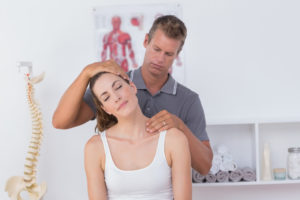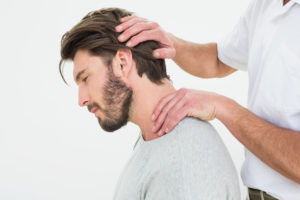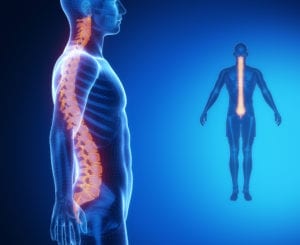

Myths regarding chiropractic treatment abound. Most are spread by those who have never experienced the benefits of treatment. Others come from doctors who don’t understand the discipline.
Maybe you have heard adjustments are painful? Or that the popping sounds come from your bones cracking?
Some people insist chiropractors aren’t real doctors and that treatments don’t help. Others say that once you start, you have to keep going to receive any benefits. Many believe chiropractic care is only for acute low back pain.
Here, Dr. Cody Doyle, a board-certified chiropractic orthopedist, and Fellow of the International Academy of Neuromusculoskeletal Medicine, who’s been successfully treating patients for over two decades, will debunk some of the most common myths. He will also discuss what happens during chiropractic adjustments and explain the benefits of treatment.
The Philosophy and Goals of Chiropractic Care
To understand the benefits of chiropractic care, it helps to understand the philosophy and goals. The discipline of chiropractic healthcare emphasizes the restoration of movement and function, without the use of surgery or drugs. Chiropractic care focuses on the relationship between function and structure in all parts of the body.
The nervous system coordinates the function of every organ and cell in the body. The main part of the nervous system is the spinal cord and the surrounding nerves.
The most crucial structure concerning chiropractic care involves the spine, which surrounds and protects the spinal cord. Many things can cause the spine to become dysfunctional, including poor posture, damaged disks, inflammation, injury, and/or weak and imbalanced muscles. Spinal dysfunction arises when the bones of the spine, called vertebrae, become limited in their motion or begin to move abnormally.
A dysfunctional spine can cause adverse tension on nerves and can cause the nerves and associated muscles to become overly sensitive (sometimes called neural sensitization). The result can include anything from back or neck pain to headaches, nerve pain, and fatigue.
Chiropractors understand the impact a dysfunctional spine can have on the body. Therefore, they focus on repairing the relationship between the function (the nervous system) and structure (the vertebrae of the spine or joints of the body). These can affect the overall restoration and preservation of health.
In addition, a good chiropractor recognizes the value of working with other health care professions. This is especially true when it is in the patient’s best interest.
What is a chiropractic adjustment?
One of the main jobs of a chiropractor is to restore the function of the spine and/or peripheral joints (knees, shoulder, hips, etc.) to their proper function through spinal and/or extraspinal manipulation.
Chiropractic adjustments involve gentle, controlled force to mobilize the joint space at spinal (or extraspinal) joints. Most often, this is achieved through the use of the chiropractor’s hands. However, sometimes a tool, such as an activator or arthrostim, is utilized to achieve the desired outcome without force.
Usually, treatment involves mobilizing the entire spine, including the lower back, mid-back, upper back, and neck.
The best chiropractors customize your treatment plan based on your unique needs. He will also consider your situation and symptoms. Your plan may involve a combination of complementary and alternative medicine options.
Numerous techniques can be utilized, and chiropractic care involves art and skill. A chiropractor should know when and how to apply adjustments.
Therefore, it is important to receive treatment from a chiropractor like Dr. Doyle. You want someone experienced with all treatment methods and options. The best treatment plan involves the knowledge and experience to know which option is best for you.
Chiropractic adjustments involve a procedure in which a trained specialist (a chiropractor) uses manipulations of the spine. These manipulations improve function and spinal mobility by properly removing restrictions from the spine and associated soft tissues.
Do my bones crack during adjustments?
During chiropractic adjustments, you may hear a popping or cracking noise. A common myth is that this sound is related to your bones cracking.
Actually, these sounds occur due to the release of gasses from between the vertebrae. This happens when fixated or restricted spinal joints are mobilized. The gasses include carbon dioxide, oxygen, and nitrogen.
Sometimes the popping sound does not occur. This is normal and simply means that the gasses with the joint capsule had not reached the level necessary to produce an audible sound. The “pop” sound is not necessary or required to achieve a successful treatment.
How do adjustments help?
Once your spine is moving more normally, you will notice more freedom of movement and other symptoms like muscle spasm and muscular aches will also improve.
The restored function allows for improved range of motion, reduced nerve irritation, and muscle relaxation.
In addition, chiropractic adjustments send a signal to the brain to release endorphins. These are the body’s natural painkiller. Endorphins produce a feeling of euphoria similar to opioids, and their release in the body provides patients with relief of pain.
Is everyone a candidate?
Chiropractic care is not for everyone. While many patients with acute and chronic pain do benefit, certain patients may not be the best candidates.
Dr. Doyle will perform a thorough examination and will ensure that you can safely receive chiropractic care before beginning treatment.
Patients with the following issues may not be a candidate for chiropractic management.
- Severe osteoporosis
- Cancer of the spine
- High risk of stroke and/or bleeding disorders
Is a chiropractor a real doctor?
Training to become a Doctor of Chiropractic involves a lot of work. It begins with a four-year undergraduate degree. Most students take many of the same classes and earn the same bachelor’s degrees as medical doctors.
Next, the student attends another four or five years of graduate work at a chiropractic school. Upon completion, they must take and pass state and national board examinations.
The biggest difference between chiropractic schools and medical schools is the focus.
Medical doctors focus on treating unhealthy conditions with things like prescription medications and surgery. Chiropractors, however, focus on healthy living and proper function of the body. The goal is to remove the obstacles that prevent the human body from functioning optimally. And spinal alignment is critical to achieving optimal function.
Dr. Doyle has 23 years of experience as a Chiropractor. In addition to his education to become a chiropractor, Dr. Cody Doyle is a Board-Certified Chiropractic Orthopedist, and a Diplomate and Fellow of the International Academy of Neuromusculoskeletal Medicine, formerly the Academy of Chiropractic Orthopedist. He has been in private practice since opening his first clinic in his hometown of North Richland Hills, Texas in 1998. Dr. Doyle is driven to help patients reach their full potential with knowledgeable and proactive chiropractic support. As a board-certified neuromusculoskeletal specialist, he is proficient in all areas of the body’s neuromusculoskeletal system and methods for improving function, sensorimotor control, and reducing both chronic and acute pain.
Will I need chiropractic care forever?
Patients with acute issues, such as pain from an injury or accident, usually receive relief with just a few visits. Most patients receive optimal improvement in six to ten visits. However, someone with complicating factors, “red flags”, or a chronic condition may require ongoing treatment for continued relief.
Patients who receive relief with improved function may find “as needed” treatments necessary to stay healthy and achieve maximum benefits.
What to Expect with Chiropractic Care
During your consultation, the chiropractor should perform a thorough physical examination, including any necessary diagnostic testing, such as x-rays. They should also gather information about your medical history and medications. Additional testing, such as CT scans or MRI, may also be ordered, depending on your symptoms and mechanism of injury.
Once your chiropractor has determined your diagnosis, he should create a customized treatment plan based on your unique symptoms and needs. This may include chiropractic care, acupuncture, myofascial release therapy, or other complementary treatment options.
For chiropractic treatment, your chiropractor will place you in specific positions so he can treat your affected areas. Most often, this involves a face-down position on a padded table specifically designed for chiropractic treatments.
The chiropractor will then use manual adjustments or a special tool to treat your spinal joints.
After adjustments, many patients report immediate relief. However, some patients require a few treatments to notice results. Some patients may take a few weeks before beginning to progress. Usually, this involves chronic pain patients who exhibit neurologic adaptations due to long-standing pain and spinal dysfunction.
A few patients do report some minor side effects after treatment, which may include fatigue, headache, soreness, or even increased pain. These issues may occur within the first few hours and usually don’t last longer than 24 hours. For most patients, rest, ice, or non-prescription medications are all that is needed to alleviate any side effects.
Have questions about chiropractic care?
If you would like to learn more about chiropractic treatment options, contact Doyle Chiropractic and Acupuncture today at (817) 767-5430.
We would love the opportunity to answer your questions and schedule you for a consultation with Dr. Doyle.






